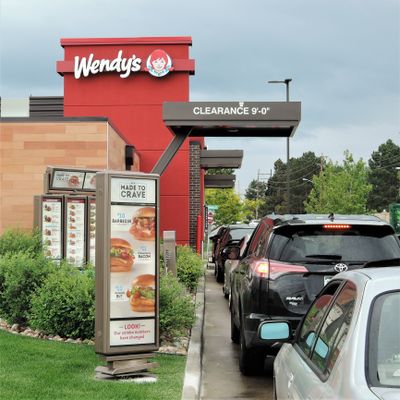A surge fee on your Frosty? Wendy’s to test ‘dynamic pricing’ in 2025.

The deals at Wendy’s may soon not be as square as their burgers.
The fast-food chain is set to start experimenting with dynamic pricing at company-owned stores next year. Wendy’s CEO Kirk Tanner said the company will soon spend $20 million to swap in digital menu boards, which will let it start testing live price changes at stores next year. And Wendy’s is looking to make more technological advancements.
“Beginning as early as 2025, we will begin testing more enhanced features like dynamic pricing and … AI-enabled menu changes and suggestive selling,” Tanner said during a Feb. 15 investor call.
A Wendy’s spokesperson told The Washington Post on Tuesday that the investment will provide “value” during the slower parts of the day, adding, “As early as 2025, we plan to test a number of features such as AI-enabled menu changes and suggestive selling based on factors such as weather that we think will provide great value and an improved customer and crew experience.”
Anyone who has tried to buy a ticket to fly around the holidays or get an Uber right after a big concert lets out is familiar with dynamic pricing, in which prices tend to go up with demand. Dynamic pricing can take into account multiple factors, including off-peak seasonality.
“Whether you like it or not, it’s the rules you have to live by. But the restaurant business is much more competitive,” said Timothy Webb, an assistant professor of hospitality at the University of Delaware who studies dynamic pricing.
Wendy’s hasn’t released details about its dynamic pricing and didn’t respond to questions from The Post about its proposed pricing strategy, but Webb said price changes will be in cents and not dollars.
“It’s not going to be a $10 difference on the cheeseburger. It’s going to be a quarter,” he said.
The difference might be an extra $50 in profit an hour per store. But that adds up with 415 company-owned stores. (Wendy’s has nearly 7,000 franchised locations.)
He said people rarely notice tiny differences anyway, especially with delivery, where customers already assume there will be extra costs for the convenience.
“We’re kind of in an evolving time where companies are realizing some opportunities with technology and trying to drive some bottom line for their businesses,” Webb said.
Restaurants using dynamic pricing are often trying to get customers to come during off-peak hours instead of the traditional noon lunchtime or post-work dinner rush. So, as a way to get customers to come at a more efficient time for the workers, Wendy’s might offer deals to regulars.
Webb said artificial intelligence and other back-end technology has made it possible for companies to optimize prices to get the most out of customers.
“No one can run experiments in every individual person. But AI can track what items you purchase and when,” Webb said.
If you’re a loyal customer who uses the Wendy’s app, the chain knows what you like to order and when. So you may get a push alert to your phone enticing you to come make a visit to the lady with red pigtails and have that favorite sandwich, maybe even with a small coupon for an item that the store is trying to move more of before it goes bad.
The real trick is how to avoid making people feel manipulated.
“They’re just trying to find windows where people won’t notice or are willing to pay a little more,” Webb said.